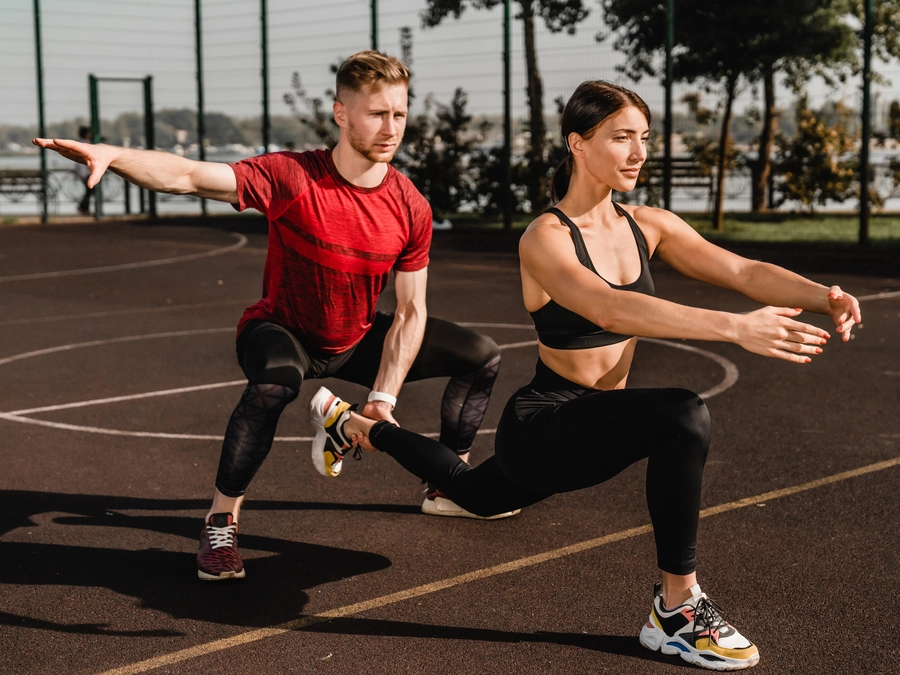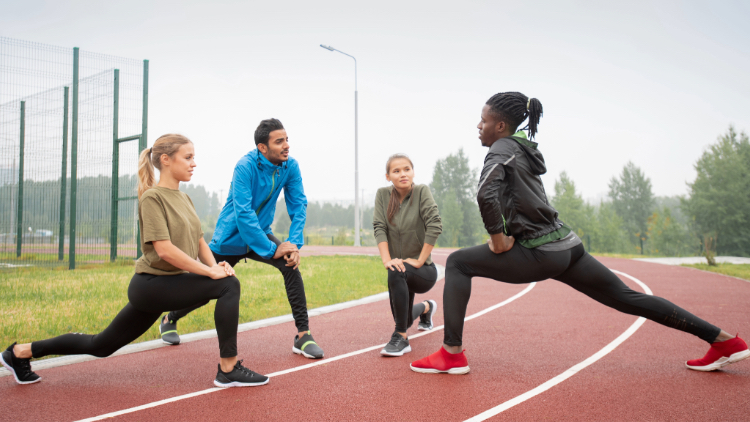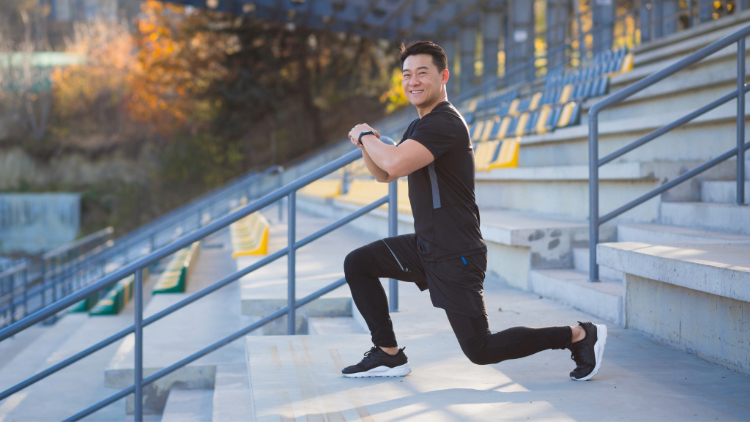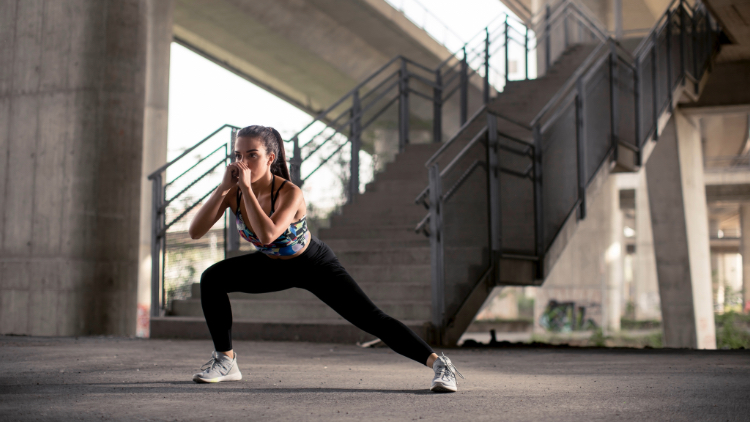Welcome



When it comes to building stronger legs, two exercises often go head-to-head: squats and lunges. Both are staples in leg day routines and for good reason—they engage multiple muscle groups, improve strength, and enhance overall athletic performance. But which one truly reigns supreme in sculpting powerful legs?
In this article, we’ll delve into the unique benefits of squats and lunges, comparing their effectiveness in leg development. Whether you're a seasoned gym-goer or just embarking on your fitness journey, understanding these two fundamental movements will help you unlock your leg-building potential. Get ready to discover which exercise might just be the key to your stronger legs!
When it comes to leg day, squats and lunges are often the main contenders. But what sets these two exercises apart? At their core, both movements target your lower body, yet they do so in distinct ways due to their mechanics and muscle engagement. Squats are a bilateral exercise, meaning they work both legs simultaneously. This exercise involves lowering your body by bending your knees and hips, then rising back up to a standing position. It’s a compound movement that not only targets your quadriceps, hamstrings, and glutes but also engages your core and lower back for stability.

On the other hand, lunges are a unilateral exercise, focusing on one leg at a time. By stepping forward or backward and lowering your hips until both knees are bent at a 90-degree angle, lunges challenge your balance and coordination in addition to your muscle strength. This single-leg focus means lunges can help address muscle imbalances that bilateral exercises might not fully rectify. Lunges also engage various stabilizer muscles that might not get as much attention during squats.
Another crucial difference lies in the range of motion and the plane of movement. Squats primarily operate in the sagittal plane (forward and backward), whereas lunges can incorporate movements in multiple planes—sagittal, frontal (side-to-side), and even transverse (rotational). This multi-directional dynamic makes lunges a versatile exercise for enhancing functional fitness, which is essential for daily activities and athletic performance.
Understanding how squats and lunges activate your muscles can help you decide which exercise better suits your leg-strengthening goals. Squats are renowned for their ability to engage the quadriceps, hamstrings, and glutes extensively. When you lower into a squat, your quads work hard to control the descent, while your hamstrings and glutes activate to push you back up. Additionally, squats recruit your core muscles, including the rectus abdominis and obliques, to maintain stability throughout the movement.
Lunges, while also targeting the quads, hamstrings, and glutes, place a significant emphasis on the stabilizing muscles. The unilateral nature of lunges means that your core, particularly the obliques, must work harder to prevent your torso from tipping. Furthermore, lunges activate the adductors and abductors, the inner and outer thigh muscles, more than squats do. These muscles are crucial for maintaining balance and proper alignment of your legs and hips.
Interestingly, lunges also engage the calf muscles to a greater extent than squats. During the lunge movement, especially when stepping forward or backward, your calves work to stabilize your ankle and foot. This added calf engagement can contribute to overall lower leg strength and endurance. Therefore, if your goal is to build not just stronger but also more balanced and stable legs, incorporating lunges into your routine can be highly beneficial.
When it comes to building sheer power and strength, squats often take the lead. The ability to load up a barbell with significant weight and perform squats makes this exercise a powerhouse for developing lower body strength. The heavy lifting aspect of squats stimulates muscle hypertrophy, which is essential for increasing muscle size and strength. Additionally, squats are considered a full-body workout because they engage multiple muscle groups simultaneously, including the core and upper body for stabilization.
Squats also enhance your explosive power. The motion of driving up from the squat position requires a significant amount of force, which translates to improved athletic performance in activities that require jumping, sprinting, and sudden changes in direction. This explosive power is not just beneficial for athletes; it also improves functional strength needed for daily activities such as lifting heavy objects or climbing stairs.
However, it’s important to note that while squats are excellent for building power, they can be demanding on the joints, particularly the knees and lower back. Proper form and technique are crucial to avoid injury and maximize the benefits of squats. For those with joint issues or beginners who may not have the necessary strength and stability, starting with bodyweight squats or lighter weights and gradually progressing can help build the foundation needed for heavier lifting.

While squats excel in building power, lunges are unparalleled when it comes to enhancing balance and mobility. The unilateral nature of lunges requires you to stabilize your body on one leg at a time, which challenges your balance more than bilateral exercises like squats. This increased demand for balance helps develop proprioception, the awareness of your body’s position in space, which is crucial for preventing falls and improving coordination.
Lunges also promote greater flexibility and mobility, particularly in the hips and ankles. The range of motion involved in lunges requires you to stretch your hip flexors and engage your glutes and hamstrings through a more extended movement. This flexibility is beneficial not only for athletic performance but also for maintaining joint health and preventing stiffness that can result from prolonged sitting or inactivity.
Furthermore, lunges can be modified to target different aspects of balance and mobility. For instance, lateral lunges (side lunges) work the muscles along the side of your hips and thighs, improving lateral stability and mobility. Reverse lunges, where you step backward instead of forward, place less stress on the knees and can be a safer option for those with knee issues. These variations make lunges a versatile exercise that can be tailored to individual fitness levels and goals.
When it comes to calorie burning, both squats and lunges are highly effective, but there are some nuances to consider. Squats, especially when performed with heavy weights, can burn a significant number of calories due to the large muscle groups involved and the intensity of the movement. The compound nature of squats means that they not only work your lower body but also engage your core and upper body muscles, leading to a higher overall energy expenditure.
Lunges, on the other hand, may not allow for the same heavy loading as squats, but they still provide a substantial calorie-burning effect. The dynamic nature of lunges, particularly when performed with variations such as walking lunges or jumping lunges, increases the cardiovascular demand of the exercise. This elevated heart rate during lunges can contribute to a higher calorie burn, especially when performed in a circuit or high-intensity interval training (HIIT) format.
Ultimately, the total calorie burn from either exercise will depend on several factors, including the intensity, duration, and individual effort put into the workout. Incorporating both squats and lunges into your routine can provide a balanced approach to calorie burning, combining the strength-building benefits of squats with the cardiovascular and stabilizing advantages of lunges. This combination can help you achieve a more comprehensive and effective workout.

For those new to strength training, squats can be an excellent starting point due to their simplicity and scalability. Bodyweight squats require no equipment and can be performed anywhere, making them accessible for beginners. The basic movement pattern of squats is also a fundamental human motion, akin to sitting down and standing up, which most people can perform with minimal instruction.
Moreover, squats can be easily modified to match the fitness level of the individual. Beginners can start with shallow squats and gradually increase the depth as they build strength and confidence. Additionally, using a chair or a wall for support can help maintain proper form and reduce the risk of injury. As strength and proficiency improve, weights can be added to increase the challenge and continue progressing.
However, it’s crucial for beginners to focus on proper form and technique from the outset. Common mistakes, such as allowing the knees to cave inward or leaning too far forward, can lead to injury and diminish the effectiveness of the exercise. Seeking guidance from a fitness professional or using resources such as instructional videos can help ensure that squats are performed correctly and safely.
The distinction between unilateral (single-leg) and bilateral (double-leg) exercises is a key factor in understanding the benefits of lunges and squats. Bilateral exercises like squats allow you to lift heavier weights, which is advantageous for building maximal strength and muscle mass. The ability to distribute the load across both legs also means that you can target multiple muscle groups simultaneously, leading to efficient and effective workouts.
Unilateral exercises like lunges, however, offer unique benefits that bilateral exercises cannot fully replicate. Training one leg at a time helps identify and correct muscle imbalances, which are common in many individuals. These imbalances can lead to compensatory movements and increase the risk of injury. By isolating each leg, lunges ensure that both sides of the body are equally strong and stable.
Additionally, unilateral training improves coordination and balance, as each leg must support the body independently. This enhanced stability translates to better performance in both sports and daily activities. The functional nature of lunges, which mimic movements such as walking, running, and climbing stairs, makes them particularly valuable for overall fitness and injury prevention.
Proper form is paramount when performing squats and lunges to maximize benefits and minimize the risk of injury. For squats, the key is to maintain a neutral spine and avoid excessive forward lean. Your feet should be shoulder-width apart, with toes slightly turned out. As you lower your body, ensure your knees track over your toes and do not cave inward. Keeping your chest up and engaging your core throughout the movement helps protect your lower back.
For lunges, the primary focus should be on maintaining balance and alignment. Start with your feet hip-width apart and take a step forward or backward, lowering your hips so that both knees are bent at a 90-degree angle. The front knee should be directly above the ankle, and the back knee should hover just above the ground. Avoid leaning forward or arching your back, and engage your core to stay upright. Using a mirror or recording your form can help identify and correct any deviations.
It’s also essential to listen to your body and avoid pushing through pain. If you experience discomfort in your knees, hips, or lower back, it may indicate improper form or the need to modify the exercise. Incorporating dynamic warm-ups and mobility exercises before leg workouts can help prepare your muscles and joints for the demands of squats and lunges, reducing the risk of injury.

The decision between squats and lunges often depends on your specific fitness goals, current level of strength, and any existing limitations. If your primary aim is to build maximal strength and muscle mass, squats are likely the better choice due to their ability to accommodate heavier weights and engage multiple muscle groups. Squats are also ideal for developing explosive power, which is beneficial for athletes and those looking to improve their overall physical performance.
Lunges, on the other hand, are more suitable if you’re focused on enhancing balance, coordination, and functional strength. The unilateral nature of lunges makes them an excellent option for addressing muscle imbalances and improving stability. Lunges are also advantageous for those looking to increase flexibility and mobility, as they involve a greater range of motion compared to squats.
In some cases, a combination of both exercises may be the most effective approach. Incorporating squats and lunges into your routine can provide a comprehensive lower-body workout that targets strength, power, balance, and mobility. By varying your exercises, you can prevent plateaus, reduce the risk of overuse injuries, and ensure balanced muscle development.
Revolution Nutrition offers supplements that can help you get more out of your squats and lunges. Our products provide key nutrients to support muscle strength, recovery, and endurance—making tough leg workouts easier to handle. Whether you want to lift heavier in squats or improve balance and stability with lunges, good nutrition is important.
Supplements from Revolution Nutrition can help reduce muscle soreness, improve hydration, and support joint health. This means you can train more consistently and recover faster between sessions. Using our supplements alongside your workout plan can help you build stronger legs and keep progressing safely.
After exploring the unique benefits and applications of squats and lunges, it’s clear that both exercises have their place in a well-rounded fitness routine. Squats excel in building maximal strength, muscle mass, and explosive power, making them essential for those looking to develop a robust lower body. Lunges, with their emphasis on balance, coordination, and functional strength, provide a complementary approach to leg training.
In conclusion, incorporating both squats and lunges into your fitness routine can help you achieve a balanced and comprehensive approach to leg training. By leveraging the strengths of each exercise, you can build stronger, more stable, and more powerful legs.